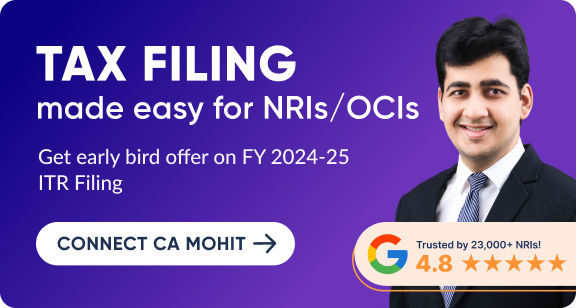
As the tax filing season approaches, Non-Resident Indians (NRIs) with income sourced from India face a common challenge—how to avoid getting taxed twice on the same income. This is where the Tax Residency Certificate (TRC) becomes a crucial document. Whether you earn interest from NRO deposits, receive rental income from Indian property, or earn capital gains from Indian investments, the TRC helps you claim benefits under Double Taxation Avoidance Agreements (DTAAs).
This comprehensive guide explains everything NRIs need to know about TRCs: their purpose, eligibility, how to obtain them, and how they work alongside Form 10F to help you stay compliant while minimizing your tax outgo in India.
Understanding the Tax Residency Certificate (TRC)
A Tax Residency Certificate is an official document issued by the tax authorities of your country of residence, confirming that you are a tax resident there for a specific financial year.
In the context of filing returns in India, the TRC serves as documentary proof of your foreign residency, enabling you to access the tax reliefs offered under DTAA provisions. Without this certificate, you risk being taxed twice—once in India and once in your resident country.
What Kind of Income Is Covered?
NRIs can claim DTAA benefits through a TRC for various categories of income arising in India. These include:
- Interest income from NRE/NRO accounts and fixed deposits
- Rental income from residential or commercial property in India
- Capital gains from sale of shares, mutual funds, or real estate
- Dividend income from Indian companies
- Consulting or salary income sourced from Indian clients or employers
These income types often attract tax deduction at source (TDS) in India. Submitting a TRC can either reduce or eliminate this deduction, depending on the treaty terms.
TRC vs. Form 10F: How They Work Together
If your foreign-issued TRC lacks specific information required by Indian authorities—such as your tax identification number or period of residency—you will also need to submit Form 10F.
Form 10F is a self-declaration that supplements your TRC. It includes details such as:
- Your full name and residential status (individual, firm, etc.)
- Tax Identification Number (TIN)
- Nationality or country of incorporation
- Validity period of tax residency
- Address in the foreign country
This form ensures that all relevant information is available to Indian tax authorities when processing your DTAA claim.
Step-by-Step: How NRIs Can Obtain a TRC
The TRC must be obtained from the tax authority in your country of residence. Here’s a general outline of the process:
- Apply through your local tax department or revenue authority
Requirements may vary by country, but typically include submitting tax returns, proof of income, or a residency affidavit. - Ensure completeness of the TRC
The certificate should contain all details required by Indian authorities. If it doesn’t, prepare to file Form 10F alongside it. - Submit the TRC and Form 10F while filing your Indian ITR
These documents are to be furnished with your tax return or to the payer deducting TDS, depending on the context.
When and Why to Renew Your TRC
A TRC is valid for only one financial year. This means NRIs must renew their certificate annually to continue enjoying DTAA benefits. The renewal process may involve reapplying with fresh documentation, and timelines may differ based on your country of residence. It’s advisable to begin the renewal process before the current certificate expires to avoid delays during tax filing.
Key Benefits of Having a TRC
Obtaining a TRC offers multiple advantages:
- Prevents double taxation by enabling you to claim DTAA relief
- Reduces withholding tax (TDS) rates on income such as interest, royalties, and dividends
- Establishes credibility and transparency in international financial transactions
- Helps avoid tax disputes and ensures accurate tax assessment
- Facilitates smoother processing of tax filings and refund claims
For businesses or individuals involved in cross-border trade or services, a TRC also serves as a compliance tool, ensuring correct tax treatment in both jurisdictions.
Residential Status under Indian Tax Law: Know Where You Stand
Before claiming benefits, it’s important to determine your residential status under Indian Income Tax rules. Here’s a brief overview:
- Resident and Ordinarily Resident (ROR): Taxed on global income. Must meet strict conditions related to presence in India over past years.
- Resident but Not Ordinarily Resident (RNOR): Taxed on Indian income and limited foreign income. Applicable to recent emigrants or returning NRIs.
- Non-Resident (NR): Taxed only on income earned or received in India. This is the most common status for NRIs living abroad.
Only those classified as Non-Residents need a TRC from their foreign country to avail DTAA relief in India.
How SB NRI Supports NRIs During Tax Filing Season
Platforms like SB NRI make tax filing in India seamless for NRIs. Whether you’re dealing with Form 10F, ITR filing, or planning tax-saving investments, SB NRI offers:
- Expert-assisted and DIY ITR filing
- Guidance on TRC requirements and DTAA claims
- Tools to manage TDS and refund tracking
- Investment suggestions, including ELSS funds for tax savings
- Mobile app for anytime access and easy uploads

For NRIs with complex financial portfolios or dual incomes, expert help streamlines compliance and helps avoid costly mistakes.
Conclusion
The Tax Residency Certificate (TRC) is more than a formality—it’s a tax-saving necessity for NRIs earning in India. Without it, you could lose out on the benefits of tax treaties designed to protect your income from double taxation.
With tax season in full swing, ensure your TRC is ready and your Form 10F is complete. It’s the first step to a hassle-free filing experience and smarter cross-border tax planning.
At SBNRI, we have simplified ITR filing for NRIs/OCIs through a smooth digital journey. We can help you assess the right computation and lower your tax liability.
You can download SBNRI App or connect with NRI Tax Expert team directly via the button below.
FAQs
1. What is a Tax Residency Certificate (TRC) and why is it important for NRIs?
A TRC is a document issued by the tax authority of an NRI’s resident country. It proves their residency status and allows them to claim benefits under the Double Taxation Avoidance Agreement (DTAA) while filing taxes in India.
2. Can I claim DTAA benefits without a TRC?
No, a TRC is mandatory to claim DTAA benefits. However, if your TRC lacks specific details required by Indian tax laws, you can supplement it by submitting Form 10F.
3. Where can NRIs get a Tax Residency Certificate?
NRIs must apply for a TRC from the tax authorities in their country of residence. The process and documentation required vary by country.
4. What details must be included in a valid TRC for use in India?
A valid TRC should include the taxpayer’s name, status, nationality, Tax Identification Number (TIN), address, period of residency, and country of residence. Missing details can be provided through Form 10F.
5. Is the TRC valid indefinitely?
No, a TRC is typically valid for one financial year. You must renew it annually to continue claiming DTAA benefits.
6. What is Form 10F and how does it relate to the TRC?
Form 10F is a self-declaration form that supplements a TRC by providing additional details required by Indian authorities. It is necessary when a TRC lacks complete information.
7. Does an NRI need a PAN to file Form 10F or claim DTAA benefits?
While having a PAN is recommended for filing taxes in India, in some cases, NRIs can still submit Form 10F and claim DTAA benefits even without a PAN, subject to conditions.



